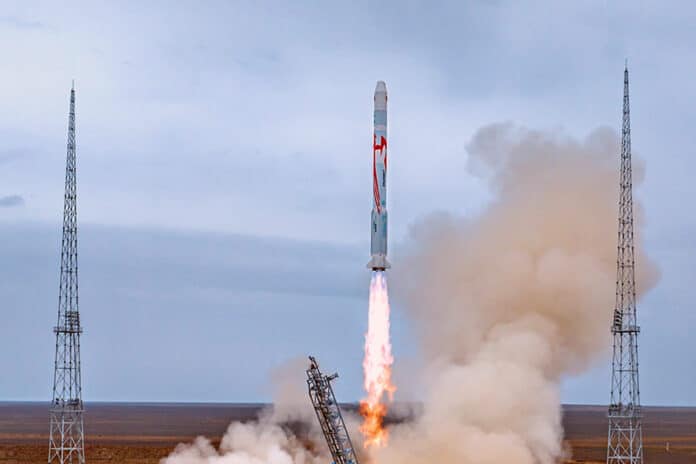China has claimed the successful launch of the first space rocket powered by liquid methane and oxygen. The Suzaku-2 Yao-2 carrier rocket, independently developed by aerospace company LandSpace, successfully lifted off from the Jiuquan Satellite Launch Center in China at 9:00 on July 12, 2023, Beijing time.
The company says the rocket flew into the predetermined orbit, and the launch mission was a complete success.
The Suzaku-2, also known as the Zhuque-2 (ZQ-2), is a medium-sized rocket powered by liquid oxygen and methane capable of lifting 6,000 kg of payload into a 200 km low Earth orbit, or 4,000 kg of payload into a 500 km Sun-synchronous orbit. It has a liftoff weight of 216 metric tons and uses four TQ-12 methalox engines on the first stage, each with a thrust of 67 metric tonnes. The second stage utilizes one vacuum-optimized TQ-12 with a thrust of 80 metric tonnes in combination with 8 metric tonnes thrust TQ-11 engine.
LandSpace conducted the debut flight of Zhuque-2 in December last year but failed to reach orbit due to an early shutdown of its second-stage vernier engines after the second-stage main engines apparently completed a successful burn. This year so far, attempts by other companies to fly a methane-fueled rocket, the Terran 1 from Relativity Space in the US and SpaceX’s Starship, also failed to reach space.
After a recent successful second flight, Zhuque-2 became the world’s first methane-fueled launch vehicle to reach orbit, marking a breakthrough in the application of new low-cost liquid propellants for China’s launch vehicles. Following the successful flight, CEO Zhang Changwu announced that the company could now begin its mass production process for Zhuque-2, with the launch having finalized and verified its design.
Until now, missions beyond Earth orbit have relied heavily on boosters burning hydrogen fuel. This is because even though liquid hydrogen is more expensive, air and space vehicle weight savings as a result of utilizing liquid hydrogen means significantly less fuel is burnt, which causes a snowball effect of increased aerodynamic efficiency, reduced vehicle weight, and reduced overall fuel cost per mission. However, cryogenic hydrogen is impractical for long-term missions because it boils away and is difficult to produce off Earth.
Methane is a promising alternative for various future space mission scenarios. It has advantages in terms of performance, cost, and environmental friendliness over conventional rocket fuels. It can be stored at higher temperatures, leaves less engine residue, and can be produced in space itself by synthesizing water and carbon dioxide. This technology is even more suitable for reusable rockets.
